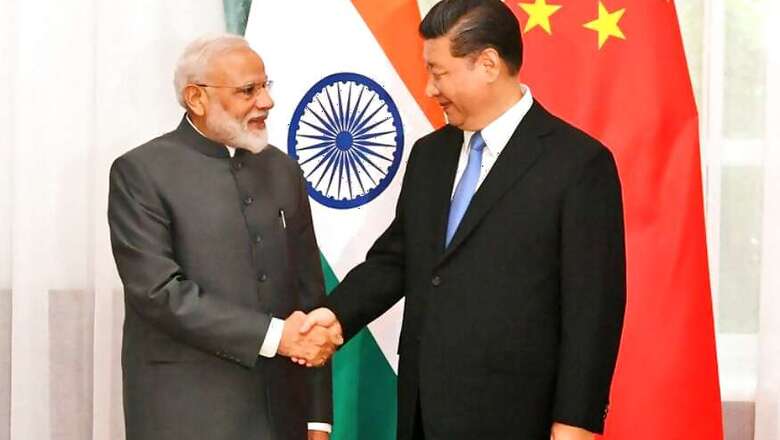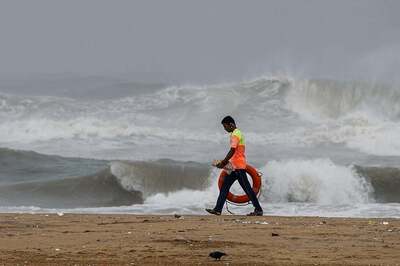
views
New Delhi: The timing of Chinese President Xi Jinping’s visit to India, which began on Friday afternoon, is rather significant. It coincides with the last round of negotiations for forging a mega regional trade alliance, which mandates further opening up of the market by India.
The RCEP (Regional Comprehensive Economic Partnership) is a proposed free trade agreement (FTA) between Brunei, Cambodia, Indonesia, Laos, Malaysia, Myanmar, the Philippines, Singapore, Thailand, Vietnam; and China, Japan, India, South Korea, Australia and New Zealand. If signed and dusted, the RCEP would become the world’s largest economic bloc, covering nearly half of the global economy.
But the catch is this: since India already has free trade agreements with countries such as Thailand, Japan, South Korea and many others in this framework, the deal is really much about China gaining further access to the Indian market.
India has been concerned over this prospective loss of market control under the RCEP, with farmers and manufacturers opposed to a large-scale influx of cheap Chinese goods. Already, from ‘manjha’ (the string used to fly kites) to Diwali lights, Chinese goods have been flooding Indian markets across categories, frustrating local manufacturers.
The RCEP aims to provide freer access to members to each others’ markets. According to several reports, India is expected to reduce or eliminate duties on more than 75% of goods imported from China under the proposed agreement. It is also being asked to cut duties on more than three-fourths of imports from other RCEP member countries. Although these duty concessions would be applicable only gradually, they are already worrying India.
During this visit of Xi, the Chinese side is expected to urge India to open up more of its market to Chinese goods, especially now since the ongoing trade dispute of Beijing with the United States has already impacted its own exports. It is pertinent to note here that even outside the RCEP, China already accounts for the largest share of India’s import basket – we import the maximum value of goods from that country and our single biggest trade deficit is with China, at a little over $50 billion in 2018-19. China, in fact, accounts for almost half of India’s total trade deficit.
This significant gap in what Indian earns by exporting to China and importing from there widened significantly during the Narendra Modi-led government’s first five-year term. As per the government’s data, trade deficit with China widened by almost a third between 2014-15 and 2018-19: trade deficit at the end of 2018-19 stood at Rs 128,694,841.81 lakh (Rs 12.87 lakh crore) from Rs 84,073,816.08 lakh in 2014-15 (Rs 8.47 lakh crore).
According to a note by CARE Ratings, India’s export growth in the first eight months of 2019 has already fallen to just 1.4% ($219 billion), significantly lower than the 11.8% growth in the same period last fiscal due to weak global trade scenario. A further lowering of tariff could continue to hurt our exports in the coming years.
It is interesting to note that despite these widespread concerns among Indian farmers, manufacturers and small businesses about the consequences of further opening up to China (or the RCEP), the government doesn’t seem averse to taking these steps. Recently, Rashtriya Swayamsevan Sangh (RSS) chief Mohan Bhagwat had sought to redefine ‘swadeshi’ during his speech on Vijayadashmi, indicating that increased globalisation is a fait accompli. This, despite Sangh affiliates such as the Swadeshi Jagran Manch (SJM) being vocal in their opposition to the RCEP and now calling for a nationwide stir against it.
Union Commerce Minister Piyush Goyal has said that the government would not allow India to be flooded with cheap Chinese goods.
“We are not going to open any gate that will allow Chinese goods to flood Indian markets. But we also appreciate that the way the world is rapidly globalising and inter-dependencies are being created," he said. “In such a scenario, standing outside the room will not benefit us. India cannot stop its engagements and trade with the rest of the world. We need to develop the capability to prevent an unnecessary influx of Chinese goods."
The SJM has already begun its 10-day stir against the RCEP. Among the industries majorly opposed to this trade bloc in India are dairy, steel and textiles. A positive development has been the signing of more than 120 Memoranda of Understanding (MoUs) between India and China, just before the Modi-Xi informal summit, to encourage the exports of some products from India. But whether the RCEP will ultimately benefit Indian trade remains to be seen.




















Comments
0 comment